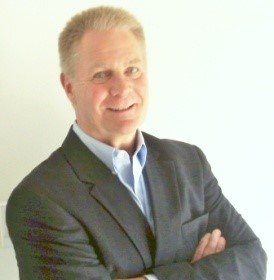Denise: There’s an old Chinese proverb that says, “you’re only as old as your joints.” I think what happens is for some reason; we’ve been trained to think that when you turn a certain age, you stop being active. I’m about to turn 40, and everybody says things like, ‘Oh, you’re about to be over the hill.’ I don’t know what that means. They think that from here, my life is just going to go downhill? I don’t buy that. I’m so tired of having people say things like, ‘Getting old stinks.’ Well yeah, sometimes we should change the way we expect our body to respond, but that doesn’t mean that just because you got older that suddenly, your joints stop working the right way. Something like falls is the fear that anybody can have. You fall, and you get hurt, and it’s that dreaded hip fracture that you’re going to get. People start falling because they stop trusting their body. They don’t train their neurological system how to respond quickly. The more we move and the more we keep moving, the more confidence we have in our bodies, the stronger we get, and the more we can just convince our brain and our body that there’s no reason to stop doing what we love to do. It adds to our happiness, too.
Phil: I enjoy playing tennis and competing. I play with players who are still in their 30s, and some are in their 70s. I ask the players over 50, “Why do you play?” They say, “I love playing.” For them, it’s a lifelong sport.
I know there are many people golf is their passion, and they play golf into their 80s, 90s and beyond. Why? They enjoy it. They enjoy the outlet it gives. Other people are into activities like distance running or lifting weights. For them it’s fun. It also keeps them looking, feeling and acting younger. That’s important.
Denise: One of my patients told me that she read an article about how the only systems that change as we age are our hearing and our eyesight. If you think about that, it’s staggering to believe that those are the only two organs or systems that are affected by age. That sets us up the notion that we can keep doing everything we want to do. You just must believe and trust in your body, and train for it.
Phil Faris: In your practice, you focus a lot on movement patterns. Why are they important and why are movement patterns causing Baby Boomers to experience pain and injuries?
Denise: Movement patterns are what can either help us or hurt us. I know you play tennis. There are certain positions you need to get your body in to effectively hit the ball, correct? So, if you are not in a good position and you try to swing at a ball, you’re either going to miss it, or you’re going to tweak something.
Phil Faris: That makes sense.
Denise: The more you train your body to get into positions quickly and efficiently, the tendons don’t have to work extra hard. The muscles have more power behind them. The joints can transmit forces the way they’re designed to, without just absorbing impact. When you learn a good movement pattern, you can avoid injury. Let’s take squatting, for example. All of us have been in a hurry maybe to pick up our grandchild or a box that’s on the floor, and we just bend over and pick up the box.
Then we say, “Oops, I shouldn’t have done that.” You may feel it for a couple of days. When we squat down the way we’re always trained, you lift with your knees and not your back; it wasn’t hard to pick up that 20-pound bag of cat food. You were learning to put your body in a good position to help complete the activity that you were asking it to do, and it wasn’t that hard. That good movement pattern is what helps you do your everyday activities just as well. That’s just as important as when you’re doing physical activities; you’re exercising, your hobbies, that you don’t get an injury that way, too.
Phil Faris: Can you explain why Baby Boomers may be more predisposed to having deficiencies in their movement patterns than let’s say, a 20 or 30-year-old.
Denise: As we age, we might, unfortunately, have some other disease processes that may be affecting our body that we don’t have control of. Diabetes is one example of a disease process that could create a little bit of a heightened risk of injury. By putting the body in a bad position, you may tweak something faster than you would let’s say if you don’t have diabetes.
Now, if you’re a healthy 57-year-old, no pain, no injuries, no ailments, those movement patterns can change because we stop doing that activity or we stop trusting that we can do it. This happens because we somehow develop a notion that, ‘Well, I’m a certain age. I shouldn’t be lifting these heavy weights anymore.’ We stop trusting and stop training our systems so that we start doubting the way we can move. That neurological system that can automatically respond and helps us change our movement patterns isn’t taxed as much as it maybe was when you were in your 20s and 30s, and you would do pickup games of basketball with your buddies, or go to the gym. We start doubting that we can do something because we have this preconceived notion that we just shouldn’t be doing it anymore.

